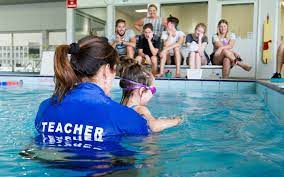Why Water Safety Courses Matter More Than Ever
In a country surrounded by coastline and packed with backyard pools, water safety isn’t just a nice-to-have—it’s essential. Whether you’re five or fifty, knowing how to stay safe in and around water is a life skill. And for many Australians, enrolling in a water safety course is the first and most crucial step toward achieving that.
But how long does it take to become swim-safe? And what’s actually involved in earning a swimming diploma? This guide breaks it down clearly—without the jargon—so you know exactly what to expect and why it’s worth the effort.
What Is a Water Safety Course?
A water safety course is structured training designed to equip participants with swimming skills and survival strategies. These courses vary based on age, experience level, and intended outcomes—from basic pool confidence to advanced aquatic instruction qualifications.
You’ll typically learn:
- Basic swimming strokes (freestyle, backstroke, etc.)
- Safe entry and exit techniques
- Floating, treading water, and rescue skills
- Risk awareness around different aquatic environments (beaches, rivers, pools)
- Emergency response and CPR fundamentals
Whether you’re enrolling your child in lessons or planning to become an accredited swim instructor, the foundation is the same—confidence in water, backed by real-life, hands-on practice.
How Long Does It Take to Get a Swimming Diploma?
The time commitment depends on your goals and current ability. For children just starting out, it’s common to progress through multiple levels over months—or even years—depending on consistency.
For adults, the timeline varies:
- Basic survival swim skills: ~4–8 weeks of weekly classes
- Intermediate technique training: ~2–3 months
- Instructor-level qualifications: ~6–12 months with coursework, exams, and in-water training
So, how long does it take to get a swimming diploma? The short answer is: anywhere from a few weeks to a year. But don’t be discouraged. Progress is personal, and even the early stages provide immense safety benefits.
Learning to Swim as an Adult: You’re Not Alone
More adults are enrolling in water safety course programs than ever before. Maybe it’s a New Year’s goal. Maybe it’s about keeping up with the kids. Or maybe a close call served as a wake-up call.
Tom, a 42-year-old dad from Newcastle, had never learned to swim. After a trip to the beach ended in a frightening near-drowning incident, he decided to enrol in an adult swim course. “It was embarrassing at first,” he admits. “But the coaches were great. I went from being terrified to actually enjoying it. Now I swim twice a week.”
Tom’s story isn’t rare. And his timeline? About 10 weeks before he could swim 25 metres confidently and safely float on his back.
What Makes a Good Water Safety Program?
Not all programs are created equal. Here’s what to look for when choosing a course:
- Qualified instructors with recognised certification
- Age-appropriate levels, from preschoolers to adults
- Balanced sessions that build both skill and water awareness
- Hands-on learning, not just theory
- Progress tracking, with a clear path to your goals
Courses should prioritise safety above all else while making learning engaging and empowering.
Who Should Take a Water Safety Course?
The short answer: everyone. But some groups benefit even more:
- Parents and carers: Learn how to supervise water play effectively
- Teachers or childcare workers: Meet duty-of-care obligations
- Teenagers: Build confidence and resilience
- Pool owners: Understand safe pool maintenance and emergency prep
- People with disabilities: Many programs offer modified training to ensure accessibility
Even if you consider yourself a strong swimmer, formal training offers knowledge that might save your life—or someone else’s.
External Support: The Government’s Push for Water Safety
In 2023, the Australian Water Safety Council released its national plan to reduce drowning by 50% by 2030. A key recommendation? Widespread participation in certified water education programs.
According to the Royal Life Saving National Drowning Report, 281 people lost their lives in Australian waters in 2022–23. A sobering statistic—but one that underscores the life-saving value of these courses.
Wrap-Up: Start Where You Are
Taking a water safety course isn’t about becoming the next Ian Thorpe. It’s about feeling confident, knowing what to do in an emergency, and enjoying Australia’s waterways with peace of mind.
It doesn’t matter if you’re starting at square one. It doesn’t matter if it takes you ten weeks or ten months. What matters is that you begin.
Take the plunge. Learn the skills. Stay safe.

